You’ve probably seen dark and sinister-looking Doberman pinschers before. Did you know these regal pups come in a super rare albino variety?
I’m howlin’ to tell you all about the fascinating history and unique traits of the striking albino Doberman pinscher. From their show-stopping snowy coats to their special care needs, these ethereal pups are captivating canines.
Whether you’re curious about their origins or considering one as your next furry friend, this paw-some guide will give you the 101 on albino Dobermans.
I’ll cover everything from finding a responsible breeder to training and caring for these mystical moon-colored dogs. Read on for the scoop!
Characteristics of the Albino Doberman Pinscher
One glimpse of an albino Doberman pinscher, and you’ll be awestruck by their otherworldly appearance. From their cottony coats to their crystalline eyes, these pearly pups are truly breathtaking. But there’s more to them than just dashing good looks! Here’s an overview of what makes the albino Doberman so captivating:
Appearance
The most obvious feature of the albino Doberman pinscher is their ivory coat. This is caused by a lack of melanin pigment, resulting in a purely white fur hue. They’ll often have captivating ice-blue eyes as well, along with a pink nose and paw pads. Their striking visage gives them an almost supernatural vibe. Some even liken their ghostly look to that of a wolf!
While a snowy coat is their signature, albino Dobies will sometimes have small splashes of color called ticking. This results in flecks of tan or cream on their otherwise pearl-hued fur. The ticking is most noticeable as a puppy and tends to fade with age. An all-white albino Doberman is very rare.
Personality
Despite their otherworldly exterior, albino Dobermans have similar personalities to their normally pigmented counterparts. They’re revered as intelligent, loyal, and people-oriented pups. Albino or not, Dobies bond deeply with their families and aim to please them.
They can be reserved with strangers but are affectionate and silly once they get comfortable. Early socialization and training are key to shaping their temperament. With proper handling, albino Dobermans make wonderful watchdogs and companions.
Health & Care
Albino Dobermans require some special care to keep their sensitive skin and eyes healthy. As with other albino dogs, lack of melanin makes them prone to sunburn, skin trauma, and vision/hearing impairments. They also have difficulty regulating body temperature.
To prevent skin damage, albino Dobies need protection from extended sun exposure and may require medicated shampoos or wipes. Yearly eye exams, hearing tests, and bloodwork screens are advised to monitor for issues. Their environment should be temperature controlled as well.
With diligent care, however, albino Dobermans have similar lifespans to non-albino Dobies, averaging 10-12 years. Their stellar intellect also makes training easier regarding their special needs.
Finding an Ethical Albino Doberman Breeder
If you’re smitten with the albino Doberman pinscher, the next step is finding a responsible breeder. Sadly, some disreputable sources try to cash in on the high demand for rare-colored Dobies. Avoid backyard breeders only focused on profit over puppy health and welfare. Instead, look for breeders who:
Perform Extensive Health Testing
Reputable albino Doby breeders will screen breeding dogs for issues like hip dysplasia, cardiomyopathy, thyroid problems, and more. They should happily provide proof of health testing. This helps minimize the chances of hereditary conditions in puppies.
Prioritize Temperament
Ethical breeders emphasize sound temperament over looks. They raise Dobermans with plenty of socialization with people, dogs, sights, and sounds. Ask about their temperament evaluation protocol. Shy or aggressive parent dogs should disqualify a litter.
Are Transparent About Puppy Care
The breeder should answer all your questions about how the albino puppies are raised and cared for. This includes diet, socialization, vet care, grooming, etc. They should also provide health records and an initial supply of food.
Have a Support System
A quality breeder will offer continued support after you take your puppy home. This includes advice on training, care, health issues, and taking back dogs if you ever cannot keep them. Avoid any breeder who doesn’t want long-term involvement.
Know the Signs of a Backyard Breeder:
- Breeding dogs with unknown backgrounds
- Advertising on retail sites like Craigslist or Kijiji
- Refusing to show parents’ health testing proof
- Having multiple litters available
- Pricing albino Doberman puppies well below market value
- Being unable or unwilling to answer questions
While the $2000-$3500 price tag may seem steep, it ensures healthy, socialized albino Dobe pups when going through legitimate breeders. Be wary of anything under $1500.
With research, you can find an ethical breeder dedicated to furthering the albino Doberman pinscher as an exceptional companion!
Caring for an Albino Doberman Puppy
Bringing home an albino Doberman pinscher puppy is an exciting new chapter! Their distinctive looks make them showstoppers, but they require some special care. Here are tips for properly raising your ghostly little goblin:
Create a Comfortable Environment
Albino Doberman pups need protection from harsh sunlight and temperature swings. Keep their living space shaded during the day and between 65-75°F. Have plenty of soft bedding they can snuggle into as well.
Start Training & Socialization ASAP
Begin obedience training and socialization as soon as your albino Dobie puppy comes home. Reward wanted behaviors and redirect unwanted ones. Safely introduce them to many people, pets, places, and stimuli during the critical socialization window.
Use Positive Reinforcement
Albino Dobermans thrive with positive, reward-based training. Use treats, praise, and play to motivate them. Never punish or scold, as this can damage their sensitive nature. Be patient – their exuberant energy level can make training a challenge!
Monitor Sun Exposure
When outdoors, apply canine sunscreen to your albino pup’s skin and provide shade. Start with just 10-15 minutes of direct sun exposure at a time. Supervise to ensure they don’t get sunburned. UV protection garments are also great for walks.
Groom Regularly
Use mild dog shampoo when bathing an albino Dobie puppy. Comb their coat daily to remove shedding fur. Trim nails weekly, clean ears with veterinarian-approved solution, and brush teeth often. Check the skin for any abnormalities.
Feed a High-Quality Diet
Feed a vet-recommended food for large breed puppies. Look for omega fatty acids to nourish the skin and coat. Add a vitamin E supplement as well. Provide fresh water at all times.
Enrich Their Environment
Give your albino Doberman pinscher puppy plenty of toys for stimulation. Rotate novel toys regularly to prevent boredom. Arrange interactive feeding puzzles, too. Try hiding treats around the house for them to sniff out. Mental enrichment is just as important as physical!
With the right start, your ivory pup will grow into a happy, well-mannered albino ambassador. They’ll be the talk of the town at the dog park!
Living with an Adult Albino Doberman
Now that your albino Doberman pinscher has grown into a striking snowy sighthound, are you prepared for the unique needs of albino adult Dobie ownership? Their distinctive appearance comes with special considerations. Here’s how to give your moon-kissed canine the best life:
Continue Skin Protection
An albino Doberman’s skin requires lifelong diligent care. Apply doggie sunscreen 30 minutes before going outside and reapply often. Limit sun exposure during peak hours. Examine their skin regularly for any abnormalities or changes.
Maintain Training & Exercise
Albino Dobies needs substantial daily exercise paired with obedience training. Aim for at least 60-90 minutes of vigorous activity like running, hiking, agility courses, or playing fetch. This meets both their exercise and mental stimulation needs.
Watch for Signs of Sensory Loss
Schedule twice-yearly veterinary exams to monitor your albino Doberman pinscher for vision or hearing impairment. Learn to recognize subtle signs like hesitation to climb stairs or difficulty locating toys. Address any issues early.
Adapt Your Lifestyle
You may need to adjust aspects of your lifestyle for an albino Doberman’s needs. This includes supervising time outdoors, temperature regulation indoors, planning for their sensitivity during travel, and avoiding sun exposure during peak daylight hours.
Enrich Their Life
Prevent boredom by providing puzzles, training courses, new toys, and socialization. Allow safe explorations outdoors (with sun protection). Give them a purpose with dog sports or jobs if desired. An enriched albino Dobie is a happy Dobie!
Stay Vigilant About Health
Monitor for any unexplained changes in energy level, appetite, weight, or behavior that could indicate a health problem. Albinism puts Dobies at increased risk for certain issues. Schedule well visits and testing to catch problems early.
While an albino twist adds some extra special care, Dobies of all colors make outstanding companions. With a little extra attention to their unique needs, your ghostly hound will live their best, lightly pigmented life!
Conclusion
After reading this guide, I hope you feel fully prepared and empowered in your journey with the captivating albino Doberman pinscher! Let’s recap the key points:
- Albino Dobies have a stunning snowy coat and light eyes due to a lack of melanin pigment. Their appearance is quite supernatural!
- They need diligent protection from sun exposure and temperature extremes but can live a normal lifespan with proper care.
- An ethical, responsible breeder will health test parents, emphasize temperament, and offer lifelong support.
- Early socialization and training are instrumental for these intelligent, energetic pups. Use only positive reinforcement.
- Providing mental and physical enrichment is key to preventing behavior issues. Give them outlets for their working breed nature.
- Adapting your lifestyle to accommodate their special sensitivity is crucial throughout life. Prioritize their skin, eye, and ear health.
- With dedicated care, an albino Doberman pinscher can make a captivating, loyal companion and furry family member.
Overall, this guide gave you a howling good overview of what makes the mystical albino Doberman pinscher so magical! Their striking moon-kissed appearance and big dog charisma give them an otherworldly allure. Yet, with diligent care from a loving pet parent, they can live a fulfilling life full of fun, activity, and dedication to their human pack.
There’s no doubt these regal, ethereal pups will turn heads wherever they go. Their rarity and beauty draw the curious gaze of all who meet them. If you’re ready to make an eye-catching albino Dobie part of your family, use the tips in this guide to find the perfect mystical moon-hued hound for you!
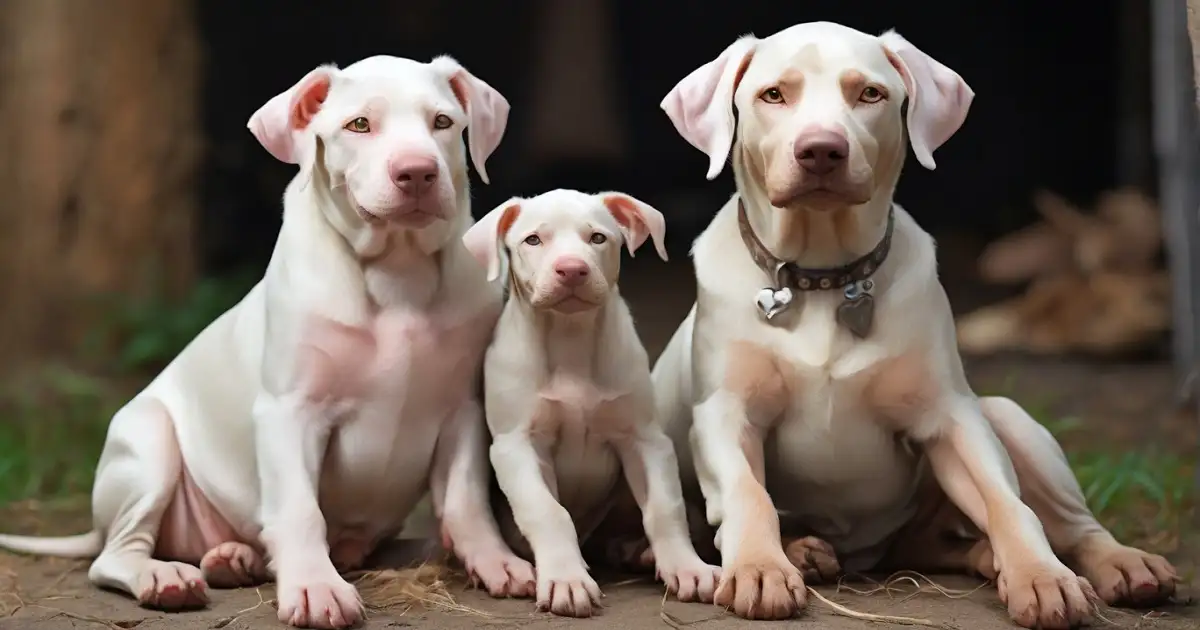
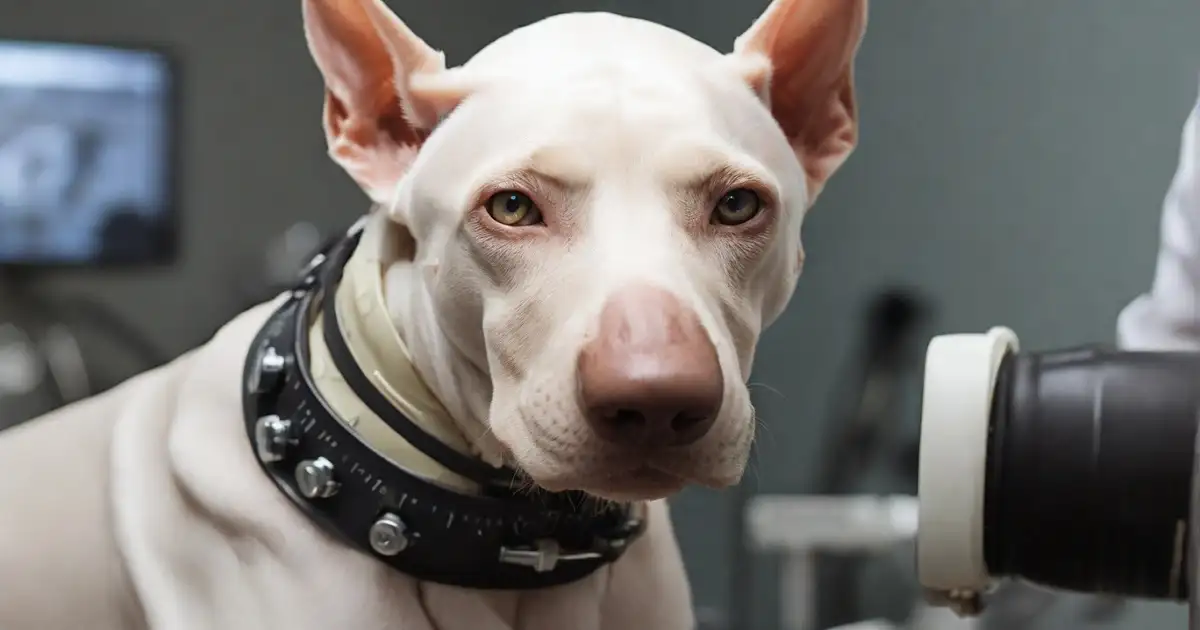
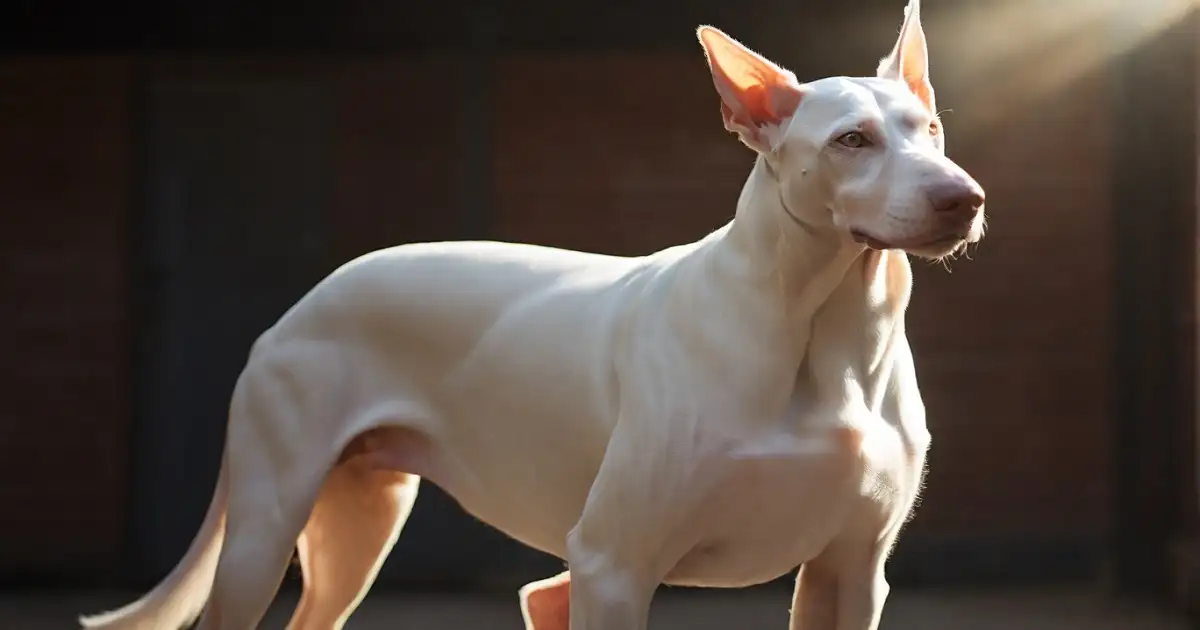
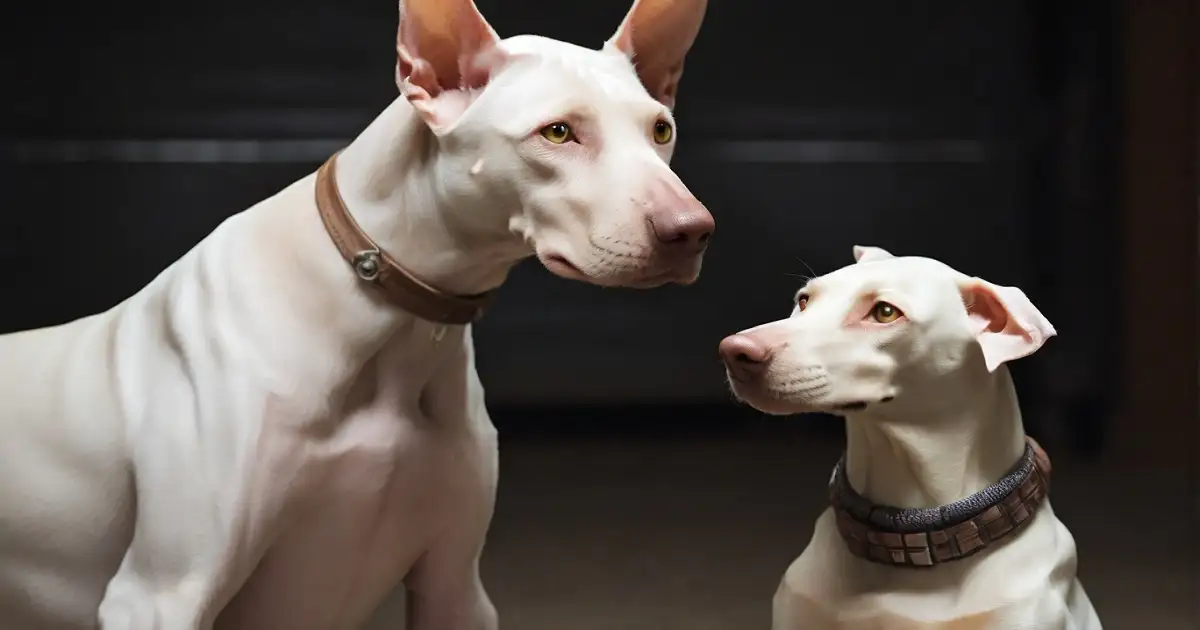
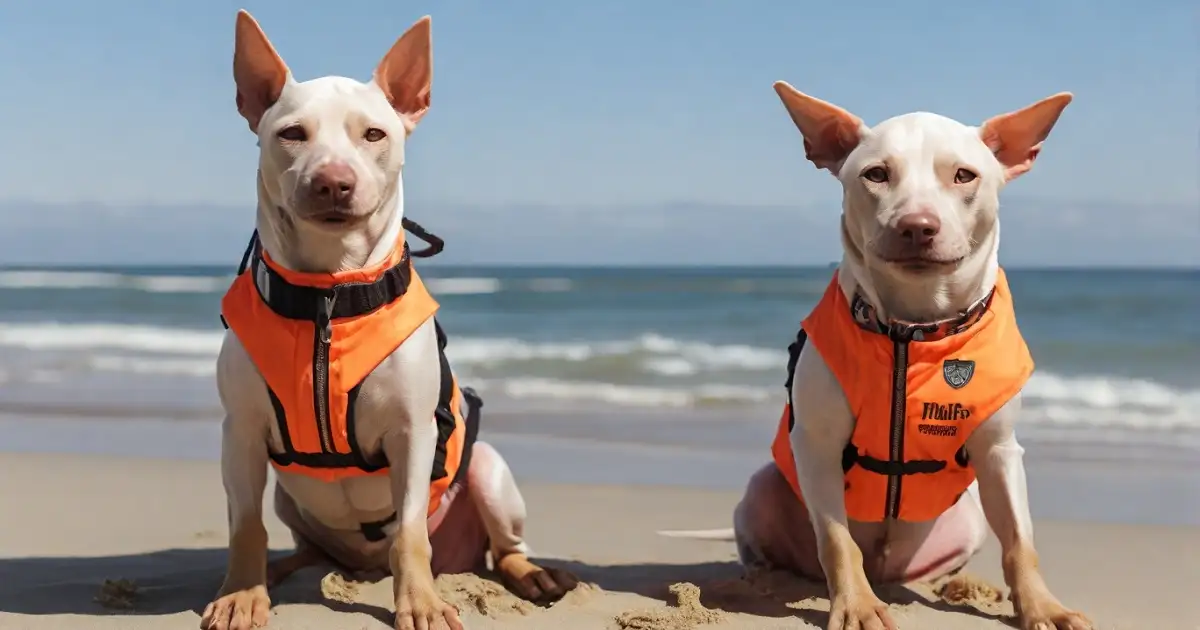
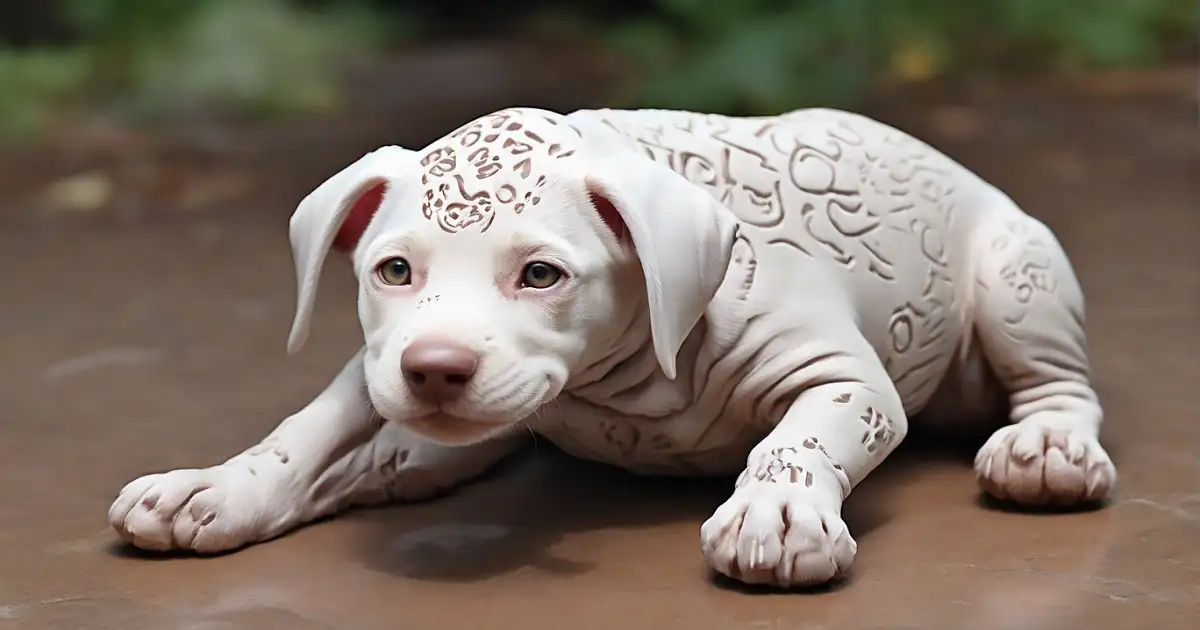




1 thought on “The Fascinating History of the Albino Doberman Pinscher: A Complete Guide”